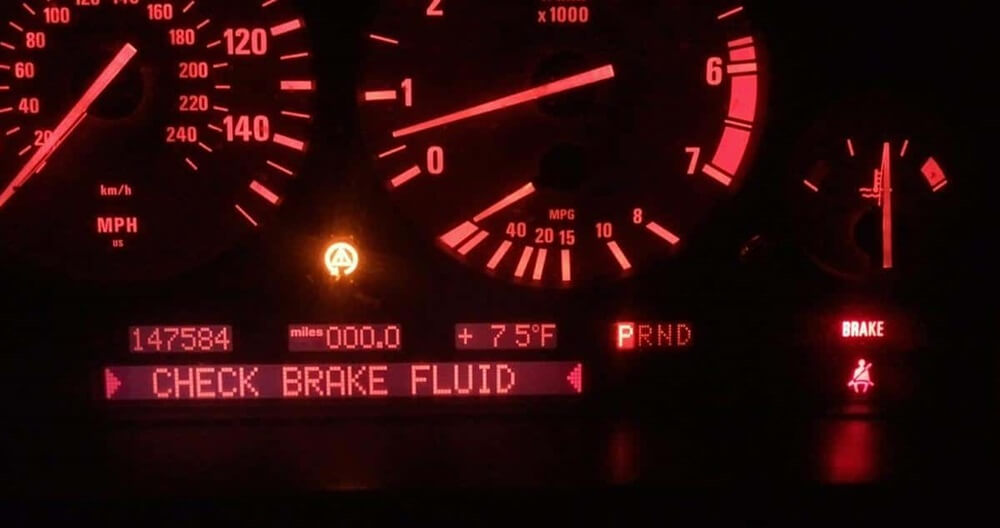How Do I Know If My Car Needs Brake Fluid

For decades, the question "How do I know if my car needs brake fluid?" has had a relatively straightforward answer. Low fluid level, a spongy brake pedal, or the dreaded brake warning light illuminated on the dashboard were the common indicators. But as automotive technology leaps forward, propelled by the electrification revolution and the rise of smart vehicle systems, this question is evolving, becoming both simpler and more complex.
The Traditional Indicators: Still Relevant, but Evolving
The fundamentals remain. A low brake fluid level in the reservoir is always a red flag. It could indicate a leak somewhere in the system, worn brake pads causing the calipers to extend further, or simply that it's time for a fluid flush. Regular visual checks of the brake fluid reservoir are still essential, even in the age of electric vehicles (EVs) and advanced driver-assistance systems (ADAS). Similarly, a spongy brake pedal, where you have to press down further than usual for the brakes to engage, suggests air in the lines or contaminated fluid, both necessitating immediate attention. And of course, never ignore the brake warning light. While it could signal low fluid, it can also indicate more serious issues like problems with the Anti-lock Braking System (ABS) or Electronic Stability Control (ESC).
However, the interpretation of these symptoms is becoming nuanced. In vehicles equipped with advanced braking systems, the "feel" of the brake pedal might be artificially altered by the electronic control unit (ECU). This is particularly true in hybrid and electric vehicles that utilize regenerative braking. Regenerative braking, where the electric motor helps slow the car down, recovering energy in the process, significantly reduces the reliance on traditional friction brakes. This means brake pads and rotors wear down much slower, and consequently, the brake fluid experiences less heat stress and contamination.
The Electric and Hybrid Difference
While EVs and hybrids boast longer brake component lifespans, they introduce new considerations for brake fluid management. The regenerative braking system handles a significant portion of the braking duties, but the hydraulic braking system remains crucial for emergency stops and low-speed maneuvers. This means the brake fluid can sit stagnant for longer periods, potentially absorbing moisture from the atmosphere. Moisture contamination is the enemy of brake fluid, leading to reduced boiling point and corrosion within the system. Therefore, regular brake fluid testing, especially for moisture content, becomes even more critical in EVs and hybrids. Manufacturers often specify longer service intervals, but regional climate conditions, driving habits, and overall vehicle usage should all be factored into the decision.
Furthermore, some advanced EVs feature electronically controlled braking systems that completely decouple the brake pedal from the hydraulic system, relying entirely on "brake-by-wire" technology. In these systems, sensors translate pedal pressure into electronic signals that activate the braking system. While incredibly efficient and responsive, these systems are highly complex and rely on sophisticated software and sensors. Diagnostic routines can detect potential brake fluid issues, but relying solely on electronic alerts can be risky. Proactive maintenance and regular inspections are still paramount.
Smart Automotive Solutions and Predictive Maintenance
The future of brake fluid monitoring lies in smart automotive solutions and predictive maintenance. Imagine sensors constantly monitoring the brake fluid's condition, including temperature, viscosity, moisture content, and even the presence of contaminants. This data, transmitted wirelessly to the vehicle's ECU and potentially even to a cloud-based platform, can provide real-time insights into the health of the braking system. Algorithms can then predict when a brake fluid flush or other maintenance is required, alerting the driver or even automatically scheduling a service appointment.
This level of preventative maintenance could significantly reduce the risk of brake failure and improve overall vehicle safety. However, challenges remain. The cost of implementing these advanced sensor systems, the reliability of the data, and the potential for cybersecurity vulnerabilities are all important considerations. Data privacy is also a concern, as detailed braking data could reveal driving habits and location information. Establishing robust data protection protocols and ensuring transparency with consumers will be crucial for the widespread adoption of these technologies.
Moreover, integrating these smart braking solutions into the existing automotive ecosystem will require collaboration between automakers, sensor manufacturers, software developers, and service providers. Standardizing data formats and communication protocols will be essential for interoperability and seamless integration across different vehicle brands and models.
Looking Ahead: A Vision of Proactive Mobility
Despite the challenges, the future of brake fluid management, and indeed, all aspects of automotive maintenance, is moving towards a proactive, data-driven approach. We envision a world where vehicles are constantly monitoring their own health, predicting potential failures, and scheduling necessary maintenance before problems arise. This shift from reactive repairs to proactive maintenance will not only improve vehicle safety and reliability but also optimize performance and extend vehicle lifespan. Mobility will become more seamless, efficient, and, most importantly, safer. The question "How do I know if my car needs brake fluid?" will be answered not by a warning light after a problem has occurred, but by a proactive alert months in advance, ensuring that your vehicle is always ready for the road ahead. The future is not just about driving; it's about anticipating and preventing, leading to a truly intelligent and connected driving experience.
